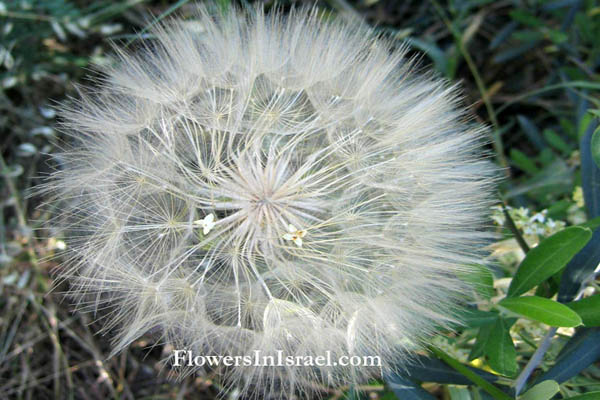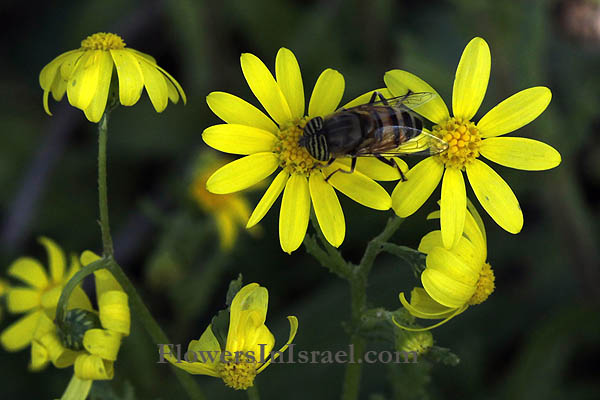Eastern groundsel, Spring Groundsel,
Hebrew: סביון אביבי, Arabic: بيسوم
| Scientific name: | Senecio vernalis Waldst. et Kit. | |
| Synonym name: | Senecio leucanthemifolius Poir. | |
| Common name: | Spring Groundsel, Eastern groundsel | |
| Hebrew name: | סביון אביבי | |
| Arabic name: | بيسوم | |
| Family: | Compositae / Asteraceae, מורכבים |

|
| Life form: | Therophyte, annual | |
| Stems: | 15-30 cm, upright, with erect standing branches; young plants covered in tangled hairs (arachnoid) | |
| Leaves: | Alternate, dissected once, dentate or serrate | |
| Flowers: | Yellow | |
| Fruits / pods: | Achenes; rod-like, lengthwise ribbed, yellow to light brown, with silver-white hair and a white pappus | |
| Flowering Period: | January, February, March, April, May, November, December | |
| Habitat: | Batha, Phrygana, Disturbed habitats | |
| Distribution: | Mediterranean Woodlands and Shrublands, Semi-steppe shrublands, Shrub-steppes, Montane vegetation of Mt. Hermon | |
| Chorotype: | Med - Irano-Turanian | |
| Summer shedding: | Ephemeral |

Derivation of the botanical name: Senecio, from senex, old man, referring to the gray hairs on the seeds. vernalis, of or belonging to spring. leucanthemifolius, leucos, λευκοϛ, bright, brilliant, clear, white, pale; anthem, ανϑεμον,flower; white flowered. With leaves like Leucanthemum. The Hebrew name: סביון, savion, from סב, sav (=old man); loan translation of the scientific name Senecio, from latin senecio, (=groundsel), from senex (=old man).



|